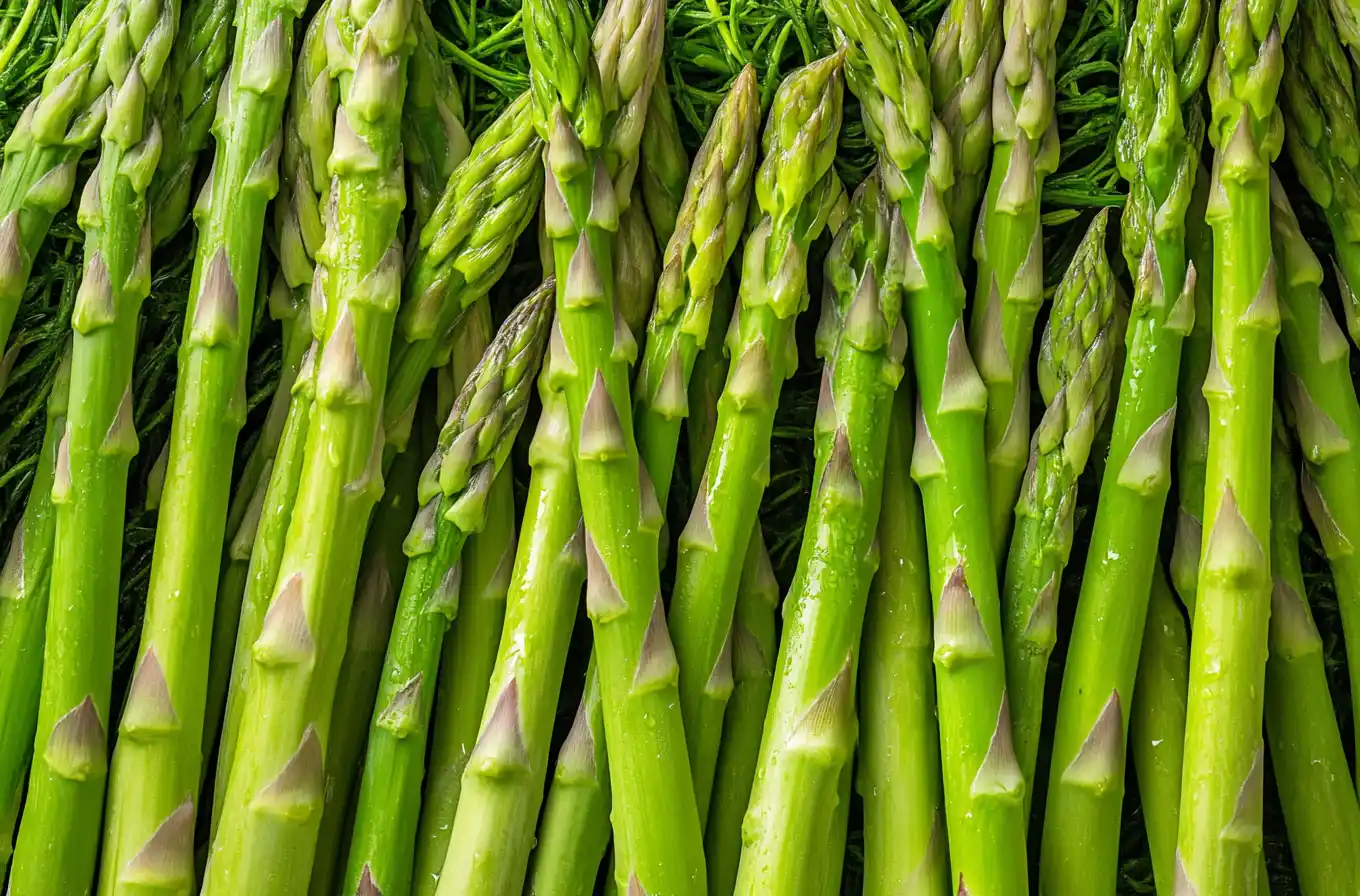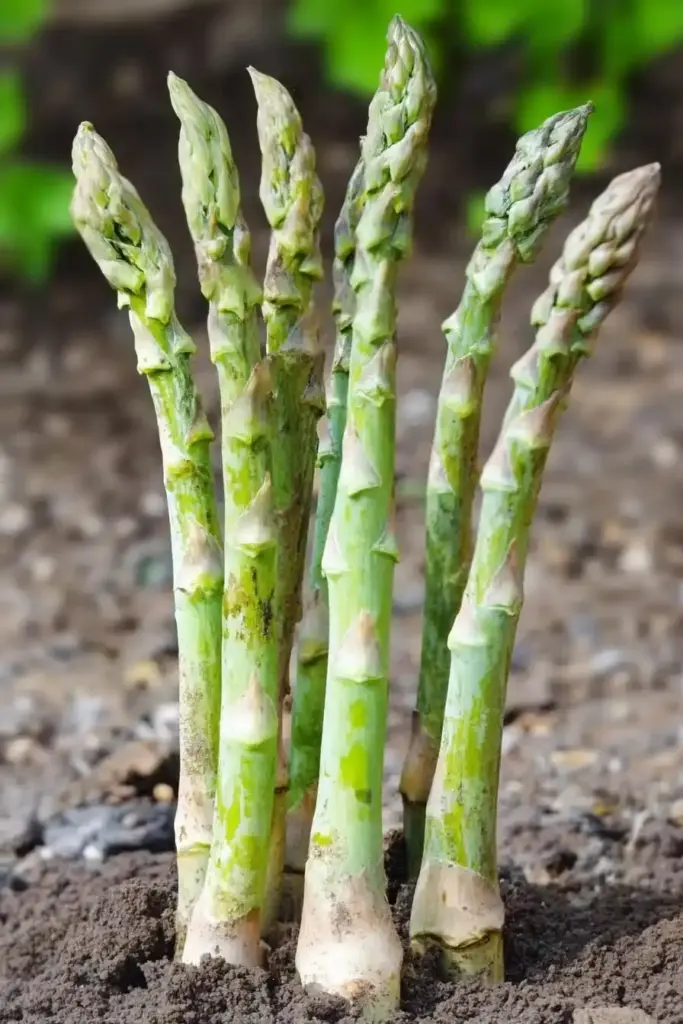Tired of replanting your vegetable garden every year? Imagine a garden where your plants come back season after season, rewarding you with fresh, delicious harvests — all with minimal effort. That’s the beauty of perennial vegetables.
Unlike annual crops that need replanting, perennial vegetables regrow from the same roots, year after year. They require less maintenance, are more sustainable, and often pack more nutrients than their annual cousins. Whether you’re a beginner or a seasoned gardener, adding perennial vegetables to your space is a smart way to save time, water, and money — all while enjoying an abundant harvest for years to come.
Table of Contents
Why Plant Perennial Vegetables?
Low Maintenance, High Reward
Once established, perennial vegetables practically take care of themselves. No need to till, sow, or start seeds every spring — just plant once and enjoy harvests for years. These plants adapt well to their environment and are naturally more resilient to pests, diseases, and weeds. Some even grow so vigorously that you’ll need to harvest regularly to prevent them from spreading too much.
Extended Harvest Season
One of the best perks of perennial vegetables is their early start. Because they’re already rooted and growing when spring arrives, many perennials like asparagus are ready to harvest long before your annuals catch up. This extended window means more food for your table, sooner and longer.
Multifunctional Garden Heroes
Perennials aren’t just practical — they’re beautiful too. Many can double as ornamental plants, forming hedges, acting as ground cover, or even helping with erosion control. Some varieties, such as legumes, fix nitrogen in the soil, naturally fertilizing surrounding crops. Others attract pollinators and beneficial insects, helping your entire garden thrive.
Better for the Soil and the Planet
Perennial vegetables are soil-builders. Their deep roots improve structure, retain moisture, and increase organic matter over time. As leaves and roots decompose, they enrich the soil and help sequester carbon — a small but meaningful step in reducing your garden’s environmental impact.
A Note on Perennials That Behave Like Annuals
Not all perennial vegetables behave the same in every climate. Some, like potatoes, are technically perennials but are commonly grown as annuals in North America due to pest and disease pressure. Gardeners often rotate them yearly to maintain soil health and prevent infestations.
On the flip side, certain plants typically labeled as annuals can live multiple years in the right conditions. Take kale, for instance — it’s a biennial, but in warm zones, it can grow year-round and even reseed itself, offering a near-perennial experience.
Understanding how these vegetables behave in your climate helps you make better planting decisions and get the most out of your garden. Whether grown as true perennials or treated as short-lived ones, these adaptable crops can be valuable additions to a low-maintenance, productive garden.
12 Top Perennial Vegetables
1. Asparagus
A true garden classic, asparagus is one of the most rewarding perennial vegetables you can grow. Once established, it produces tender green spears each spring for decades. While it requires patience — up to three years to mature from seed — planting two-year-old crowns can speed up the process, offering small harvests within a year.
To plant asparagus, choose a sunny, well-drained location. Use a trench method: dig a shallow trench, form a peak of soil in the middle, and spread the roots over the mound. Cover lightly with soil, keeping the crown tips just exposed. As the plants grow, gradually fill in the trench.
Once mature, asparagus becomes a resilient, low-maintenance producer. It’s also one of the earliest spring crops, giving you fresh greens when most other vegetables are just getting started.
2. Rhubarb
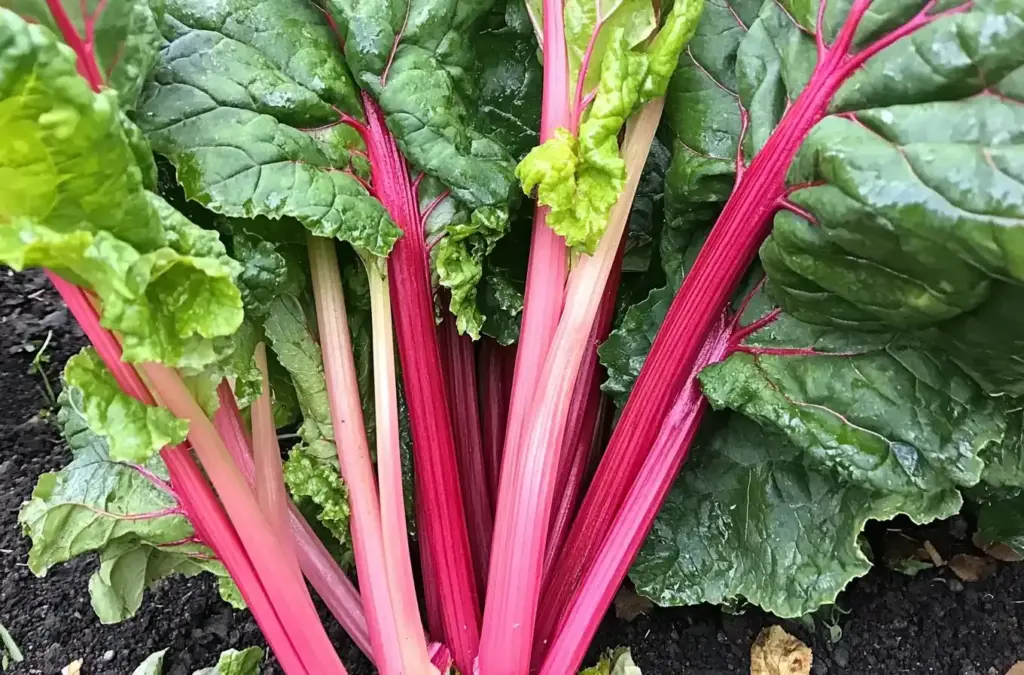
Known for its tart, ruby-red stalks, rhubarb is one of the hardiest perennial vegetables you can grow — and it’s as beautiful as it is productive. Thriving in cooler climates, rhubarb can last for years with very little attention.
Plant rhubarb crowns in early spring or fall, ideally in a sunny spot with well-draining soil. It’s important to avoid harvesting in the first year to let the roots establish. By year two or three, you’ll enjoy robust stalks perfect for pies, jams, or even juicing. Just remember: while the stalks are edible, the leaves are toxic and should never be consumed.
Rhubarb plants become larger and more productive over time, and they’re incredibly resistant to pests and disease. With regular mulching and occasional composting, you’ll have a lush, ornamental-looking plant that delivers a flavorful harvest season after season.
3. Kale
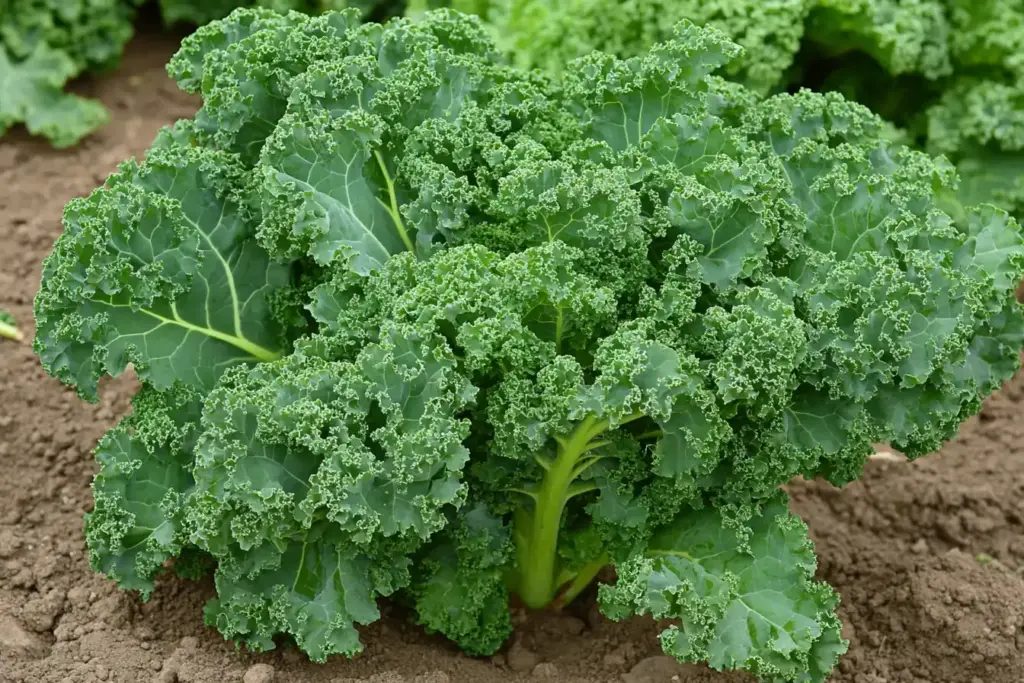
Although technically a biennial, kale often behaves like one of the most versatile perennial vegetables in warmer regions. In zones 7 through 10, kale can grow year-round, producing nutrient-dense leaves for months on end. Even in cooler climates, with proper mulching or row covers, it can survive winter and regrow in spring.
Kale thrives in partial sunlight, needing at least 5–6 hours per day. It doesn’t require much space and tolerates a wide range of soil conditions. Regular watering will keep the leaves tender and productive, while occasional pruning can encourage bushier growth.
In its second year, kale sends up flowers and seed pods, allowing you to save seeds for future planting. Many gardeners remove these to extend the leafy harvest. Whether added to smoothies, sautés, or salads, kale is a reliable and delicious staple that can offer a near-perennial experience in the right conditions.
4. Garlic
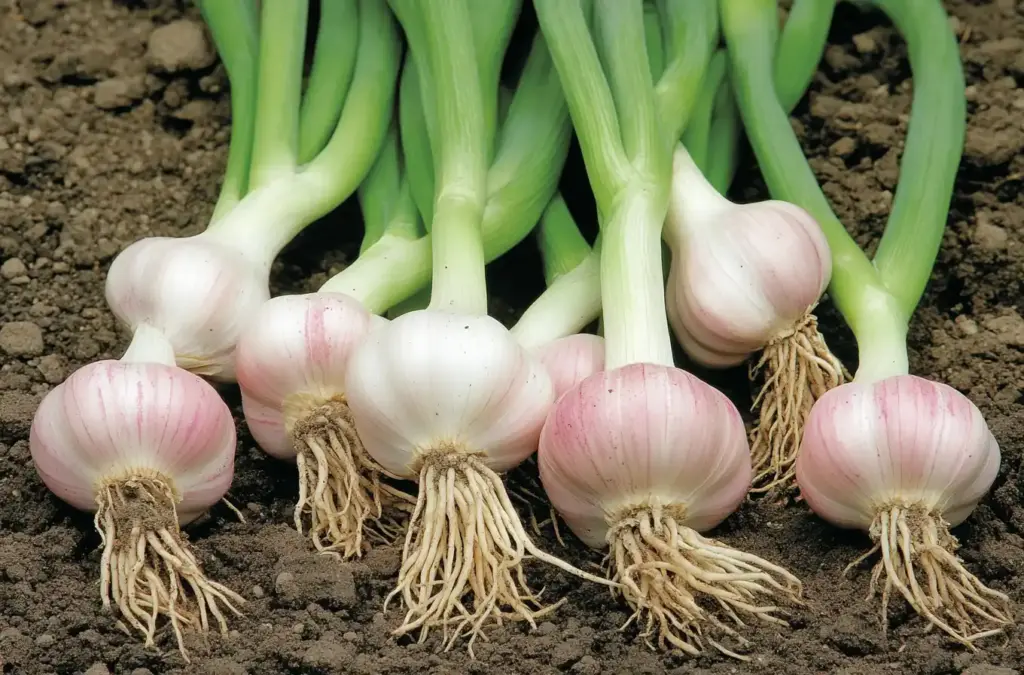
Often treated as an annual, garlic can surprise you with its perennial potential. When planted in the fall and left undisturbed, this flavorful crop can regrow year after year — making it a stealthy addition to your list of perennial vegetables.
Garlic thrives in full sun and requires a period of cold exposure (around 30–40°F for at least a month) to develop bulbs. That’s why fall planting is ideal in most climates. In short-season areas, you can start cloves indoors and transplant them in early spring. As the cloves mature, they naturally multiply underground, and if you leave a few in the soil after harvest, they’ll sprout again the following year.
Garlic also plays a supportive role in your garden. Its strong scent helps deter pests, making it a natural companion plant. Plus, it’s incredibly space-efficient — perfect for small gardens or even container growing.
5. Radicchio
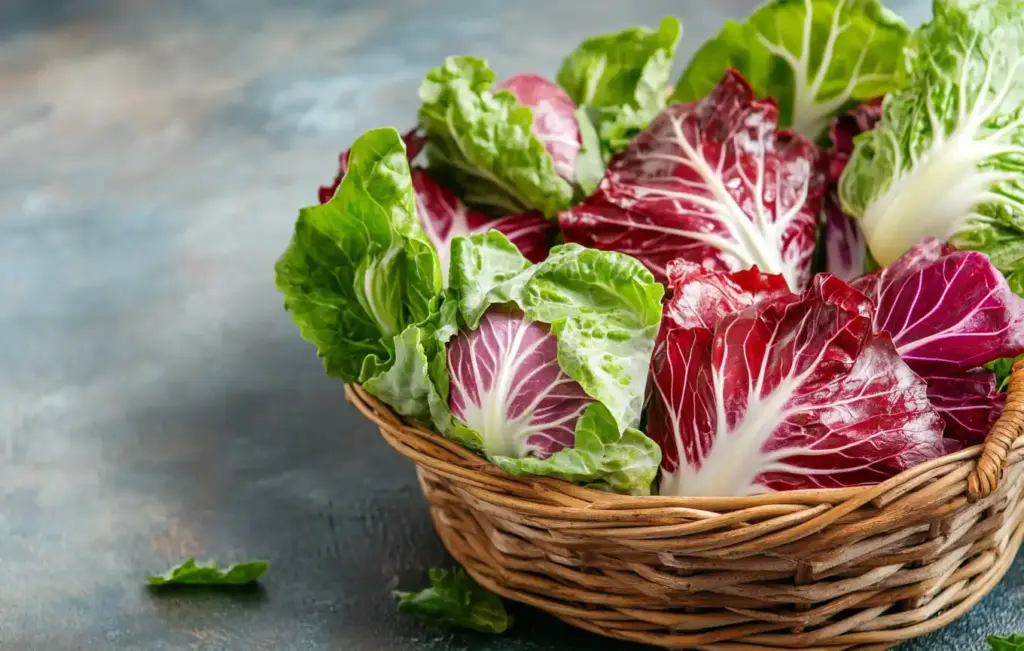
Often mistaken for red cabbage, radicchio is a cold-hardy leafy green with a bold, slightly bitter flavor that mellows when harvested in cooler months. Though it’s typically grown as an annual, radicchio is technically a biennial and can act like one of your most dependable perennial vegetables in the right conditions.
You can direct sow or transplant radicchio in early spring or fall. For best flavor, aim for a fall or early winter harvest — colder weather softens its bitterness and adds subtle sweetness. If harvested carefully, leaving the stem intact just above the soil, some varieties may regrow a second head.
Radicchio prefers full sun to partial shade and moist, well-drained soil. In mild climates, it may overwinter and return in spring. With proper care, this striking plant not only adds color and texture to your garden but also brings unique flavor to your salads and roasts year after year.
6. Horseradish
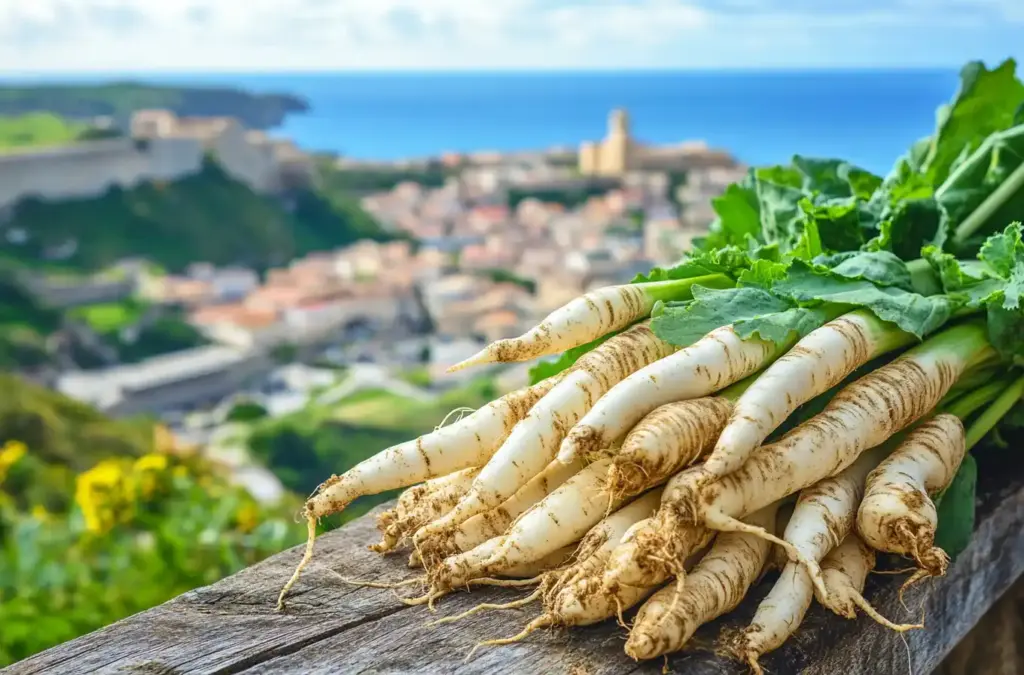
If you enjoy bold, pungent flavors, horseradish is a must-have among your perennial vegetables. This hardy root vegetable grows vigorously and can become invasive if not managed properly — which means it’s also one of the easiest crops to keep coming back year after year.
Plant horseradish roots in spring or fall in a sunny location, ideally in a contained area like a raised bed or large container. Place the crowns just below the soil surface with the growing point facing upward. It thrives in well-drained, fertile soil and appreciates regular weeding and watering for thicker roots.
Harvest in late fall after a few frosts to get the fullest flavor. Leave behind a few small root pieces in the ground, and they’ll regrow in spring — no replanting needed. Beyond its culinary punch, horseradish can help repel pests and enrich your garden’s biodiversity, making it both functional and flavorful.
7. Globe Artichokes
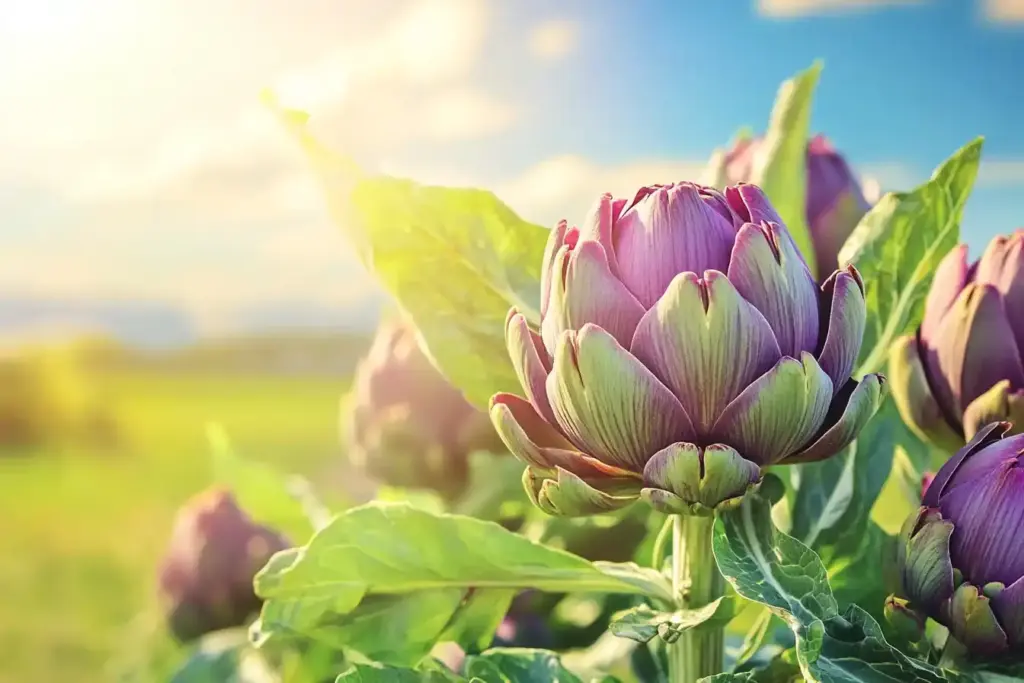
Striking and productive, globe artichokes are among the most ornamental perennial vegetables you can grow. With their dramatic foliage and edible flower buds, they add beauty and bounty to any garden. Once established, a single plant can produce for up to five years or more.
Artichokes prefer full sun and rich, well-drained soil. Start them from root divisions for the most reliable yields, though seeds are also an option. Space plants about 36 inches apart, and keep the soil moist — these large perennials are heavy drinkers. In colder climates, mulch heavily in the fall to protect the roots from frost.
Harvest the flower buds before they open. If left to bloom, they’ll produce stunning purple flowers that pollinators love. Prune the plants back in fall and refresh the soil with compost each spring to keep them productive. Artichokes deliver both a visual wow factor and a reliable, gourmet harvest year after year.
8. Chives
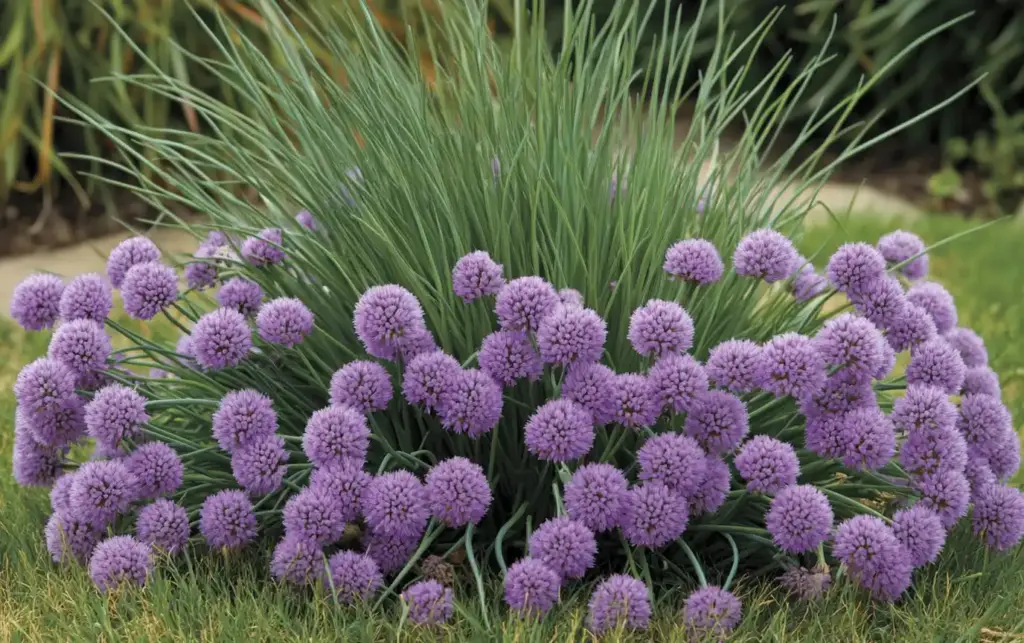
Delicate yet hardy, chives are one of the easiest perennial vegetables to grow — and one of the most useful in the kitchen. Their mild onion flavor enhances everything from eggs to soups, while their cheerful purple flowers add beauty and pollinator appeal to any garden.
Chives thrive in full sun but tolerate partial shade and grow equally well in garden beds or containers. You can start them from seed indoors in early spring or sow directly outside once the risk of frost has passed. Once established, chive plants return bigger and stronger each year, often self-seeding to form lush clumps.
Harvest the slender green stalks when they reach about 4 inches tall, snipping with scissors to encourage regrowth. Letting them flower won’t harm the plant — and the blossoms are edible too! With minimal effort, chives provide a flavorful, low-maintenance harvest season after season.
9. Watercress

A peppery, nutrient-rich green, watercress is a lesser-known gem among perennial vegetables, thriving in wet conditions where most other plants struggle. Whether grown along the edge of a pond, in containers, or even indoors, watercress rewards you with a near-continuous harvest of crisp, flavorful leaves.
This aquatic herb prefers constant moisture and partial shade. You can sow seeds directly into a waterlogged bed or grow it in containers placed in trays of water — just remember to refresh the water regularly to avoid stagnation. Once established, watercress grows quickly and can be harvested multiple times throughout the season.
With its natural antibacterial properties and high vitamin content, watercress makes an excellent addition to salads, sandwiches, and soups. It’s especially valuable in small-space or container gardens, offering big nutrition with very little maintenance.
10. Berries (Blueberries, Raspberries, Strawberries)
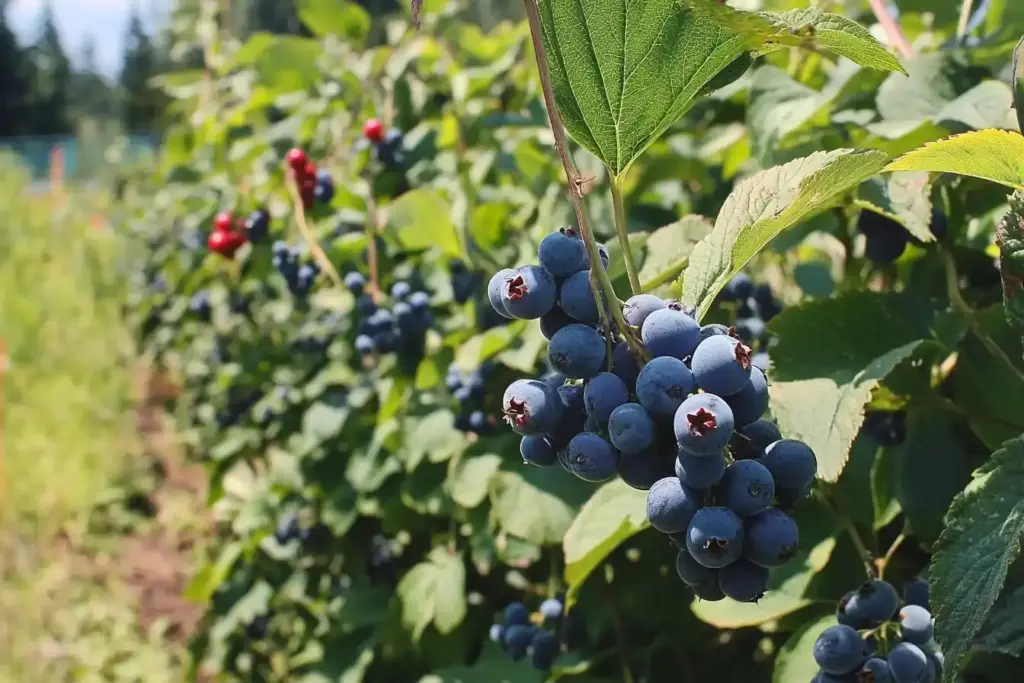
While not vegetables in the botanical sense, berries are essential members of any perennial vegetables garden. These fruiting plants offer abundant harvests year after year and often require less work than annual crops once they’re established.
Blueberries thrive in acidic soil (pH around 4.5–5.5) and need full sun and consistent moisture. Amend your soil with peat moss or pine mulch to create the right environment. Raspberries and strawberries are a bit more forgiving and grow well in most garden soils with good drainage and regular feeding.
Plant in early spring and allow a year or two for full establishment. Prune and mulch annually to maintain health and boost productivity. With the right care, berry bushes can yield buckets of sweet, antioxidant-rich fruit for many seasons.
As an added bonus, their blossoms attract pollinators, helping nearby perennial vegetables thrive as well.
11. Jerusalem Artichokes (Sunchokes)
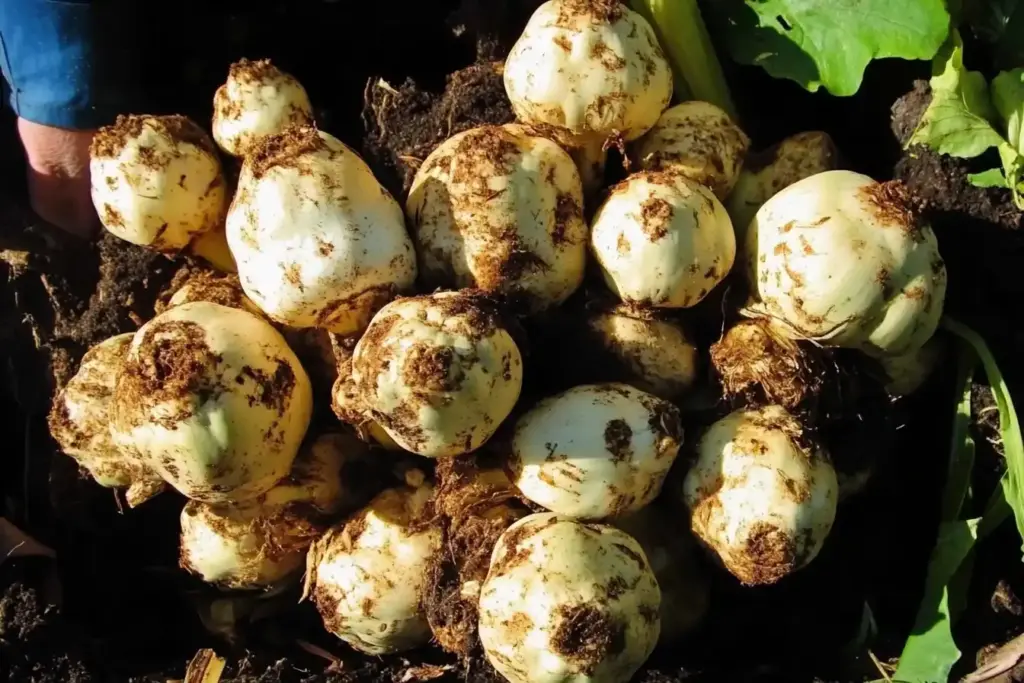
Crunchy, nutty, and incredibly productive, Jerusalem artichokes — also known as sunchokes — are standout performers in the world of perennial vegetables. These sunflower relatives produce underground tubers that can be harvested in fall and replanted (or left to regrow) year after year.
Plant tubers about 3 inches deep in spring, spacing them 12–18 inches apart in full sun. They’re fast growers and can reach 6–10 feet in height, making them great for creating edible privacy screens or windbreaks. As the season progresses, the plants produce cheerful yellow flowers and store energy in their tubers underground.
Harvest after the first frost for the best flavor. Any small tubers left in the soil will sprout the following year, often leading to even larger yields. Just be mindful — Jerusalem artichokes can spread aggressively, so it’s wise to dedicate a contained space for them.
12. Sorrel
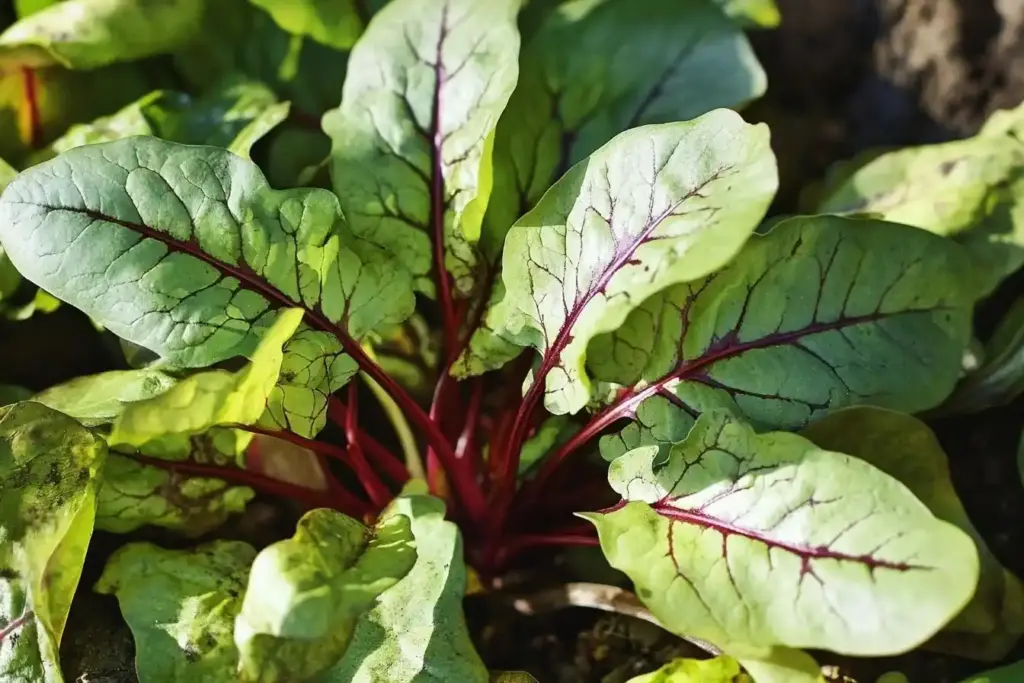
If you’re looking for a zesty, spinach-like green that comes back every year, sorrel is a standout choice among perennial vegetables. Its bright, lemony flavor adds a refreshing bite to salads, soups, and sauces — and it’s one of the first greens to appear in spring.
Sorrel prefers partial shade and moist, well-drained soil. Sow seeds in early spring, spacing seedlings about 12 inches apart to allow room for growth. Once established, the plant can live for years, especially if you avoid disturbing the roots and regularly remove flower stalks to prevent self-seeding.
Harvest young leaves frequently for the best texture and flavor. Larger, older leaves can be cooked like spinach or added to broths for a tart punch. With minimal care and plenty of flavor, sorrel is a versatile and attractive addition to any perennial food garden.
Conclusion
If you’re aiming to create a low-maintenance, high-yield garden that thrives year after year, incorporating perennial vegetables is a smart and sustainable move. These long-lived plants not only reduce the need for constant replanting, but they also enrich your soil, conserve water, support pollinators, and contribute to a more resilient food system.
Whether you’re working with raised beds, a backyard plot, or even containers, there’s a perennial option to suit your space and climate. From early-spring asparagus to tangy sorrel and juicy berries, these plants offer a diverse, delicious harvest — all from one-time planting.
By growing perennial vegetables, you’re investing in the long-term health of your garden and your table. It’s a win-win for both you and the planet.

